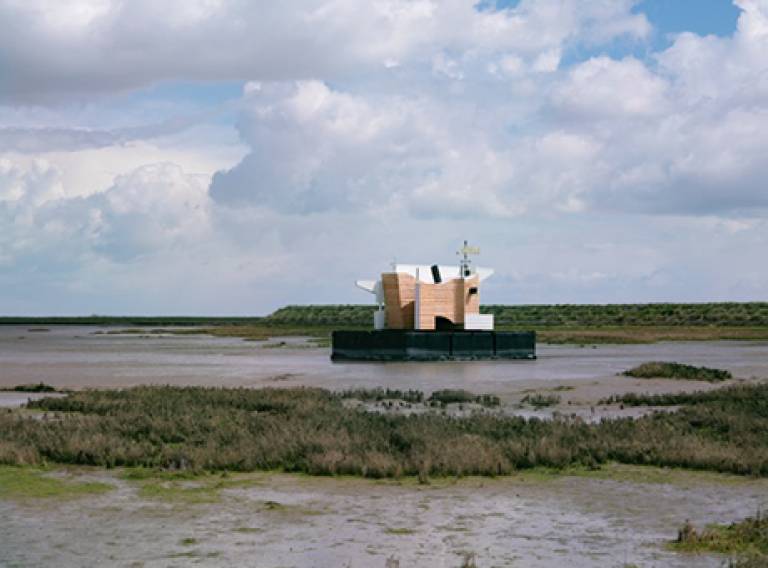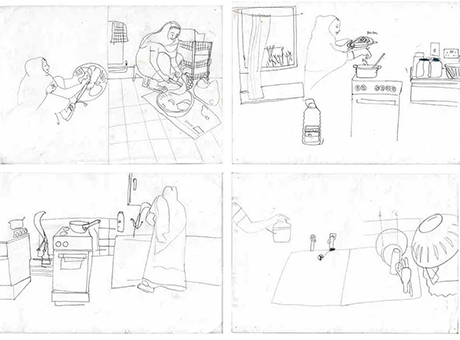PhD Research Conversations – Matthew Butcher and Judit Ferencz
17 January 2017, 4:00 pm–7:00 pm

Event Information
Open to
- All
Organiser
-
UCL
Location
-
Rm 204, 140 Hampstead Road, NW1 2BX
Join current Bartlett School of Architecture PhD candidates as they present their work in progress.
Matthew Butcher
(MPhil/PhD History & Theory)
Performative Architectures of an Estuary Mud Flat
Upgrade Presentation
Principal supervisor: Nat Chard
Subsidiary supervisor: Jane Rendell
The PhD proposes – through design-based research – a series of speculative architectures that provide a poetic and provocative response to the threat of flooding in the Thames Estuary caused by the increasing unpredictable nature of the environment due to global warming. The purpose of this work is to provide an architectural engagement with current legislative and governmental response to these threats in the area – whether legislative or through the introduction of new infrastructure. The architecture will be developed within the context of a cross-disciplinary practice between architecture and the performative, where the environment and the weather alter the material fabric and location of the architecture.
These new design proposals will be contextualised within, and informed by, the history of pioneering responses to the environment, seen in the history of art, architecture and performance conducted primarily in the 1960’s and 1970’s. As part of this investigation the PhD will present new theoretical and historical research into the avant-garde architecture of Gianni Pettena and Raimund Abraham that seeks to understand the political and environmental agendas within their work, manifest within its performative characteristics.
Alongside this research the PhD will also explore certain methodologies associated with performance and art practice that utilise ideas of role-play and re-enactment. The purpose of this is to establish notions of practice that re-use existing historical models to inform new propositions.
Image: Flood House at Wakering. Photo by Brotherton-Lock.

Judit Ferencz
(MPhil/PhD History & Theory)
The Graphic Novel as an Interdisciplinary Conservation Method
in Architectural Heritage
Upgrade Presentation
Principal supervisor: Nat Chard
Subsidiary supervisor: Jane Rendell
The housing crisis in London calls for re-thinking the role architectural heritage listing plays in the debate of demolition vs refurbishment of social housing. My research aims to develop a new critical methodology for conservation and architectural heritage practices, through the medium of the graphic novel. My architectural case study is the East London housing estate Robin Hood Gardens (1972), which was refused heritage listing in 2009 and 2015 and has been scheduled for demolition as part of a wider local regeneration scheme.
The proposed methodology draws on my own practice as an illustrator in publishing, in addition to the Hungarian conservation practice of falkutatás (‘wall research’) (Dávid, 1978) and the theoretical influence of Jane Rendell’s ’site-writing’ (2010). Falkutatás, a practice that applies archaeological stratigraphy to walls of historical buildings, was developed in the 1960’s in Hungary and used during the Cold War as a means to reveal historical continuity. It is particularly significant to this project as the Smithsons, the British architects of Robin Hood Gardens, were involved in numerous conservation projects in Hungary during this period. My proposed methodology will reevaluate falkutatás as a method for tracing historical layers, by reading it through what Rendell defines through site-writing as the ‘material, emotional, political and conceptual’ sites of research.
My graphic novel will critically re-work the historic, material and temporal literary form of the Book of Hours, late medieval illuminated manuscripts, by drawing on the concept of narratology in the works of Ricoeur (1984) and Genette (1980) where the time of the telling is combined with the time of the told. This reworking allows the medium itself to become a starting point for rethinking, through images and words, the processes and temporality of conservation, and heritage, through new processes of engaging with and communicating to my audience - government bodies, architects and residents - processes often disregarded in conventional practices.
 Close
Close

